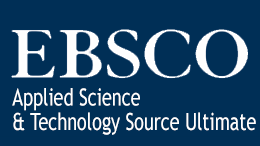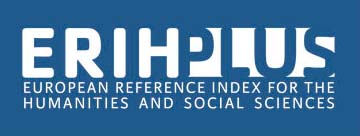Abstract
References
- Welte A, Hahn U, Büssing A, Krummenauer F. Systematic review of the application of complementary and alternative medicine and their potential therapeutic benefits in the treatment of ophthalmology patients. Klinische Monatsblatter fur Augenheilkunde. 2016;234(5):686-696.
- Aljuhani GA, Afandi R, Alkayyal AA, et al. Complementary and Alternative Medicine Use Among Patients with Dry Eye Syndrome in Saudi Arabia: A Survey Study. Clinical Ophthalmology. 2023:3207-3213.
- Heydari M, Khalili MR, Nowroozzadeh MH, et al. Therapeutic implications of curcumin in the treatment of inflammatory eye diseases: A review. Current Pharmaceutical Biotechnology. 2023;24(4):553-561.
- Jaber D, Ghannam RA, Rashed W, Shehadeh M, Zyoud SeH. Use of complementary and alternative therapies by patients with eye diseases: a hospital-based cross-sectional study from Palestine. BMC Complementary Medicine and Therapies. 2021;21(1):1-9.
- Bromfield SG, McGwin Jr G. Use of complementary and alternative medicine for eye-related diseases and conditions. Current eye research. 2013;38(12):1283-1287.
- Eze BI, Chuka-Okosa CM, Uche JN. Traditional eye medicine use by newly presenting ophthalmic patients to a teaching hospital in south-eastern Nigeria: socio-demographic and clinical correlates. BMC Complementary and Alternative Medicine. 2009;9:1-7.
- AlSalman S, AlHussaini MA, Khandekar RB, Edward DP. The proportion of complementary and alternative medicine utilization among Saudi population for eye care: Cross-sectional study. Cureus. 2021;13(2)
- Langhorst J, Wulfert H, Lauche R, et al. Systematic review of complementary and alternative medicine treatments in inflammatory bowel diseases. Journal of Crohn's and Colitis. 2015;9(1):86-106.
- Schnabel K, Binting S, Witt CM, Teut M. Use of complementary and alternative medicine by older adults–a cross-sectional survey. BMC geriatrics. 2014;14(1):1-9.
- West AL, Fetters MD, Hemmila MR, Gorenflo DW, Kiyota A, Moroi-Fetters S. Herb and vitamin supplementation use among a general ophthalmology practice population. American journal of ophthalmology. 2005;139(3):522-529.
- Bielory L, Heimall J. Review of complementary and alternative medicine in treatment of ocular allergies. Current opinion in Allergy and Clinical immunology. 2003;3(5):395-399.
- Dorcas W, Emilliene E, Estella TF, et al. An overview of herbal traditional eye care practices and the development of eye health promotion strategies in Cameroon. Journal of Advances in Medical and Pharmaceutical Sciences. 2019;20(4):1-16.
- West AL, Oren GA, Moroi SE. Evidence for the use of nutritional supplements and herbal medicines in common eye diseases. American journal of ophthalmology. 2006;141(1):157-166.
- Yang L, Yang Z, Yu H, Song H. Acupuncture therapy is more effective than artificial tears for dry eye syndrome: evidence based on a meta-analysis. Evidence-Based Complementary and Alternative Medicine. 2015;2015
- Tong L, Htoon HM, Hou A, et al. Acupuncture and herbal formulation compared with artificial tears alone: evaluation of dry eye symptoms and associated tests in randomised clinical trial. BMJ open ophthalmology. 2018;3(1)
- Na JH, Jung JH, Park JG, Song PH, Song CH. Therapeutic effects of acupuncture in typical dry eye: a systematic review and meta‐analysis. Acta Ophthalmologica. 2021;99(5):489-498.
- Ventura L. Introduction: complementary medicine in ophthalmology. Journal of ocular biology, diseases, and informatics. 2009;2:95-97.
- Shenoy R, Bialasiewicz A, Khandekar R, Al Barwani B, Al Belushi H. Traditional medicine in Oman: Its role in ophthalmology. Middle East African Journal of Ophthalmology. 2009;16(2):92.
- Wolsko PM, Eisenberg DM, Davis RB, Ettner SL, Phillips RS. Insurance coverage, medical conditions, and visits to alternative medicine providers: results of a national survey. Archives of internal medicine. 2002;162(3):281-287.
- Keenum Z, McGwin G, Witherspoon CD, Haller JA, Clark ME, Owsley C. Patients’ adherence to recommended follow-up eye care after diabetic retinopathy screening in a publicly funded county clinic and factors associated with follow-up eye care use. JAMA ophthalmology. 2016;134(11):1221-1228.
- Herman PM, Craig BM, Caspi O. Is complementary and alternative medicine (CAM) cost-effective? A systematic review. BMC Complementary and alternative medicine. 2005;5(1):1-15.
- Almazrou AA, Binyousef FH, Alruwaili SA, et al. Ophthalmologists’ Attitudes Towards Complementary and Alternative Medicine. MIDDLE EAST JOURNAL OF FAMILY MEDICINE. 7(10):175.
Abstract
Objective: To evaluate the prevalence and patterns of complementary and alternative medicine (CAM) use among patients with inflammatory eye disease.
Methods: This cross-sectional study was conducted over three months through direct interviews with 150 consecutive patients at a tertiary care clinic specializing in inflammatory eye diseases. Sociodemographic data and clinical characteristics were extracted from clinical records for analysis. Descriptive and comparative analyses were performed using IBM SPSS Statistics software.
Results: In this cohort, 110 of the 150 patients (73.3%) reported employing complementary and alternative medicine (CAM) strategies to mitigate their ocular conditions. The CAM interventions included vitamin supplementation (n=53, 35%), herbal remedies (n=41, 27%), acupuncture (n=23, 15%), and leech therapy (n=11, 7%)—notably, a significant portion—roughly one in three patients—engaged in multiple CAM therapies.
Statistical analysis revealed a robust association between CAM applications and several demographic and clinical variables. Females were more likely to use CAM (p=0.04), as were individuals with higher occupational standing (p=0.03) and income levels (p=0.03). Furthermore, patients diagnosed with uveitis exhibited a higher propensity for CAM usage than those with other inflammatory eye diseases (p=0.03). Patients diagnosed with any inflammatory eye disease (≥ 5 years) exhibited a higher propensity for CAM use (0<0.01). Most patients using CAM therapies were convinced of their therapeutic benefits to eye health, and adverse effects were infrequent. Referrals by healthcare providers constituted 57% of CAM informational resources, underscoring the need for healthcare professionals to be proactive in discussing CAM use with patients.
Conclusion: The employment of CAM modalities is prevalent among patients with inflammatory eye diseases, indicating an essential role for these therapies in this patient population. The influence of CAM on disease trajectory, potential side effects, and interactions with established immunosuppressive treatments necessitates that ophthalmologists and other healthcare professionals maintain a comprehensive understanding of CAM usage to ensure optimized and safe patient care.
References
- Welte A, Hahn U, Büssing A, Krummenauer F. Systematic review of the application of complementary and alternative medicine and their potential therapeutic benefits in the treatment of ophthalmology patients. Klinische Monatsblatter fur Augenheilkunde. 2016;234(5):686-696.
- Aljuhani GA, Afandi R, Alkayyal AA, et al. Complementary and Alternative Medicine Use Among Patients with Dry Eye Syndrome in Saudi Arabia: A Survey Study. Clinical Ophthalmology. 2023:3207-3213.
- Heydari M, Khalili MR, Nowroozzadeh MH, et al. Therapeutic implications of curcumin in the treatment of inflammatory eye diseases: A review. Current Pharmaceutical Biotechnology. 2023;24(4):553-561.
- Jaber D, Ghannam RA, Rashed W, Shehadeh M, Zyoud SeH. Use of complementary and alternative therapies by patients with eye diseases: a hospital-based cross-sectional study from Palestine. BMC Complementary Medicine and Therapies. 2021;21(1):1-9.
- Bromfield SG, McGwin Jr G. Use of complementary and alternative medicine for eye-related diseases and conditions. Current eye research. 2013;38(12):1283-1287.
- Eze BI, Chuka-Okosa CM, Uche JN. Traditional eye medicine use by newly presenting ophthalmic patients to a teaching hospital in south-eastern Nigeria: socio-demographic and clinical correlates. BMC Complementary and Alternative Medicine. 2009;9:1-7.
- AlSalman S, AlHussaini MA, Khandekar RB, Edward DP. The proportion of complementary and alternative medicine utilization among Saudi population for eye care: Cross-sectional study. Cureus. 2021;13(2)
- Langhorst J, Wulfert H, Lauche R, et al. Systematic review of complementary and alternative medicine treatments in inflammatory bowel diseases. Journal of Crohn's and Colitis. 2015;9(1):86-106.
- Schnabel K, Binting S, Witt CM, Teut M. Use of complementary and alternative medicine by older adults–a cross-sectional survey. BMC geriatrics. 2014;14(1):1-9.
- West AL, Fetters MD, Hemmila MR, Gorenflo DW, Kiyota A, Moroi-Fetters S. Herb and vitamin supplementation use among a general ophthalmology practice population. American journal of ophthalmology. 2005;139(3):522-529.
- Bielory L, Heimall J. Review of complementary and alternative medicine in treatment of ocular allergies. Current opinion in Allergy and Clinical immunology. 2003;3(5):395-399.
- Dorcas W, Emilliene E, Estella TF, et al. An overview of herbal traditional eye care practices and the development of eye health promotion strategies in Cameroon. Journal of Advances in Medical and Pharmaceutical Sciences. 2019;20(4):1-16.
- West AL, Oren GA, Moroi SE. Evidence for the use of nutritional supplements and herbal medicines in common eye diseases. American journal of ophthalmology. 2006;141(1):157-166.
- Yang L, Yang Z, Yu H, Song H. Acupuncture therapy is more effective than artificial tears for dry eye syndrome: evidence based on a meta-analysis. Evidence-Based Complementary and Alternative Medicine. 2015;2015
- Tong L, Htoon HM, Hou A, et al. Acupuncture and herbal formulation compared with artificial tears alone: evaluation of dry eye symptoms and associated tests in randomised clinical trial. BMJ open ophthalmology. 2018;3(1)
- Na JH, Jung JH, Park JG, Song PH, Song CH. Therapeutic effects of acupuncture in typical dry eye: a systematic review and meta‐analysis. Acta Ophthalmologica. 2021;99(5):489-498.
- Ventura L. Introduction: complementary medicine in ophthalmology. Journal of ocular biology, diseases, and informatics. 2009;2:95-97.
- Shenoy R, Bialasiewicz A, Khandekar R, Al Barwani B, Al Belushi H. Traditional medicine in Oman: Its role in ophthalmology. Middle East African Journal of Ophthalmology. 2009;16(2):92.
- Wolsko PM, Eisenberg DM, Davis RB, Ettner SL, Phillips RS. Insurance coverage, medical conditions, and visits to alternative medicine providers: results of a national survey. Archives of internal medicine. 2002;162(3):281-287.
- Keenum Z, McGwin G, Witherspoon CD, Haller JA, Clark ME, Owsley C. Patients’ adherence to recommended follow-up eye care after diabetic retinopathy screening in a publicly funded county clinic and factors associated with follow-up eye care use. JAMA ophthalmology. 2016;134(11):1221-1228.
- Herman PM, Craig BM, Caspi O. Is complementary and alternative medicine (CAM) cost-effective? A systematic review. BMC Complementary and alternative medicine. 2005;5(1):1-15.
- Almazrou AA, Binyousef FH, Alruwaili SA, et al. Ophthalmologists’ Attitudes Towards Complementary and Alternative Medicine. MIDDLE EAST JOURNAL OF FAMILY MEDICINE. 7(10):175.
Details
| Primary Language | English |
|---|---|
| Subjects | Traditional Chinese Medicine and Treatments |
| Journal Section | Research Articles |
| Authors | |
| Publication Date | April 29, 2024 |
| Submission Date | February 6, 2024 |
| Acceptance Date | March 20, 2024 |
| Published in Issue | Year 2024 Volume: 5 Issue: 1 |
Cited By
Reevaluating the safety of chamomile poultices in ophthalmic care
Frontiers in Pharmacology
https://doi.org/10.3389/fphar.2025.1580586
IJTCMR
International Journal of Traditional and Complementary Medicine Research






